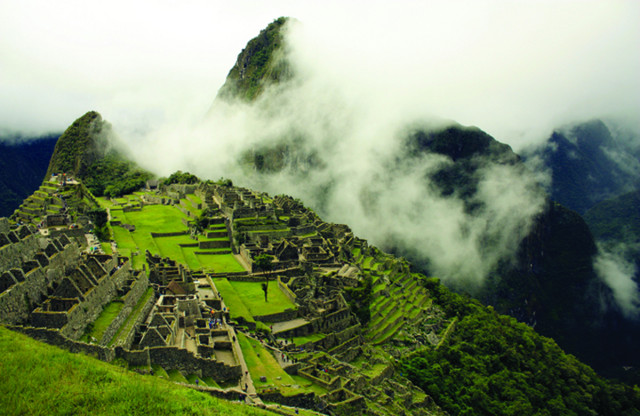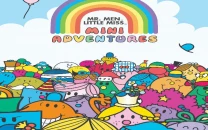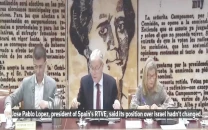Once upon a time in Peru

We discussed and deliberated over this, and all of a sudden (it was sudden, believe me), we found ourselves out-dazzling each other with an impressive array of clichés regarding travel: “We must push ourselves” was the first one (mine). The other oft-repeated one was: “You came all the way down to Peru to hop from one hotel to the next?” (His.) And then, my favourite: “Gosh, stop being a f***ing tourist.” (His again.) The last one, to be sure, is an accusation, and an incredibly piercing one for a cliché; it causes a unique variety of guilt that, in the worst-case scenarios, could lead you into doing anything to cure it, boast anything to disprove it.
As you might have guessed, I was more on the opposing side but eventually the clichés won out, and I relented. “It’s a once in a lifetime thing,” was the one that nailed it (mine).
We were stationed in Aguas Calientes, the town at the base of Machu Picchu, whose sole point of existence is to provide care, comfort and laundry services to the loathsome hordes of tourists (like the two of us), curious to see what all the fuss is about up the mountain. Machu Picchu, the ‘mystical city’ of the Incas (whatever that means), holds the curious distinction in history of staying hidden until the early part of the twentieth century, both from the world and, more importantly, from the Spanish colonisers, who would’ve deeply cherished the idea of using the place as a testing site for their latest gunpowder-based missiles. One Hiram Bingham, a Yale history professor, with the help of the locals ‘discovered’ the spectacular ruins and brought it to the world’s, and more intriguingly, Peruvians’ own attention, regardless of the fact that the locals knew about it all along.
Our mad excursion was to begin in the middle of the night (or morning or whatever 3:30 am is). Our final apologia looked something like this: Okay, so we’re ‘doing’ this again because the first time we did it the touristy way — on the bus, with a tour guide, meals included, pictures and poses and all.
To be honest, it was not Machu Picchu — I love Machu Picchu — but the act, no, the very idea of getting up to change at 2 am to lumber up a real, literal, stone and rock mountain that pissed me off. Especially on a rainy night. No, wait, it was ridiculous. It would never work, I was sure. Except, now we were already up and bathed and stood stunned and silent at what we were about to do.
At 2,430 meters, 7,970 ft., Machu Picchu is the peak of a mountain which has been carved and hewed into terraces and decorated with stone houses and temples to yield a city. In summary it’s all stone and grass, with two details that will jump out to grab your attention: stone structures that were once houses now stand without roofs and the clusters of llamas grazing on the lush green terraces. From afar, Machu Picchu is a spectacle. Up close, it is as ordinary or extraordinary as ruins generally are. You’ll walk the narrow lanes, marveling at the quarries from where the stone was extracted to build houses, granaries and monasteries. Like other tourists, you’ll run your hand over the surface of the stone and marvel at how they were smoothed into shape without the aid of iron and locked into perfect hinges which don’t leave space even for a blade to pass though. You’ll wonder at the civil engineering when you see the aqueducts and system of water channels. Your guide will show you around the Sun Temple, Temple of the Three Windows, Temple of the Condor — all structures built with their own special astronomical significance; in one you get a certain shadow in the summer solstice, in the other the moonlight makes a certain angle in the winter solstice — the Incas were big on such stuff. Much before the Spanish showed up and pillaged the Inca cities, thereby severing the supply lines to Machu Picchu (the place imported its food, as with everything else), it had a population of a few hundred, mostly monks, scholars and scientists. The Inca emperor visited the city on religious holidays and on very special occasions. The rest of the year, the city was cordoned off from the rest of the world.
I could summarise it another way: Machu Picchu is perhaps one of the few archeological sites that actually live up to their hype.
When our hotel receptionist was checking us out, she casually inquired if we had torches, to which we calmly replied in the negative. “What! Wait!” she blurted, clearly betraying a sense of alarm. Why, we asked, was there something we should be worried about?
“Yes! There will be...” she paused and searched our faces for the right words. “There will be... plants!”
Plants?! We suppressed our laughter and strutted right out into the alley, brandishing our one cellphone ahead of us, with which we planned to torch our way to glory.
We briskly walked to the end of the road and abruptly stopped the moment we crossed the last streetlight. We realised the cell-phone would not work for a torch and in the fog and drizzle, really, for all I knew, we could be walking straight over the edge into the Urubamba River. There wasn’t much to resolve with discussion, so we decided to wait for ‘the others’ to arrive.
The others came in a few minutes. They were a group of young hikers. All geared up with torches in their helmets and hands — praise the Lord. They were singing in Spanish — both the chicas and mucachos — and were quite happily trudging along when the two Pakistanis decided to join the party sharing their torch lights.
Soon we reached the point where the ascent was to begin. Merging into us were other hikers adventuring their way up into gloom and darkness at 3:45 am. My first thought upon seeing the trail was: Aha! they have steps going into the mountain — that should be easy! Misguided and misperceived relief, needless to say, met a fitting strangulation very soon.
Have you ever climbed stairs continuously for 105 minutes? Well, then clearly you don’t know what I’m talking about. And well, there isn’t much to tell either. Think of it as a long stretch of blackness punctuated by brief pauses of swearing at yourself.
The first 15 minutes were fine. (Well, sort of.) But after that there was no conscious thought except: “Where does this end,” and “Why doesn’t this end.” If there is a soul — and there is at least one in each one of us, I swear — I felt it there, freely writhing from the sensations arising from my lower back, joints, and other adjoining areas. And that’s the first realisation you have: pain has a way to concentrate you, all of you at one point — the point of the pain. You stop living in your head. You shift into your body. You wish your darndest to utilise every wisp of energy (even that of a thought) to climb one more step.
Climbing, working, and completely out of breath. Realisation No. 27: Gatorade is to hikers what penicillin was to European colonisers venturing into Africa.
Realisation No 36: Plants! Yes, plants! They exist! And they crowded the trail from the sides. We were lucky enough to have had people ahead of us, who cleared them. But yes, they were a nuisance, and yes, a torch would have helped.
Other things. The eight kilo backpack I carried became the most hateful object in the world. There came a point after about an hour when I threw it on the ground and told my friend that either he lugged it from there on or it would stay there — our only change of clothes, shoes, passports, tickets notwithstanding. I would go so far as to claim that the moment I exchanged my backpack for his light-as-air camera bag was the most blissful moment I experienced in all of my youthful years (no, that tells you nothing about my state of happiness). I took the backpack back after about half an hour, out of camaraderie and sheer moral torment. Without exaggeration, it was one of the difficult moral decisions of my life — at least the one involving most physical pain.
We had to wait for about an hour before the gates opened. We had no snacks with us and I don’t even smoke. The sense of exhilaration was extraordinary. We had done it. I could’ve returned to Aguas Calientes without even going inside.
Published in The Express Tribune, August 1st, 2010.



















COMMENTS
Comments are moderated and generally will be posted if they are on-topic and not abusive.
For more information, please see our Comments FAQ